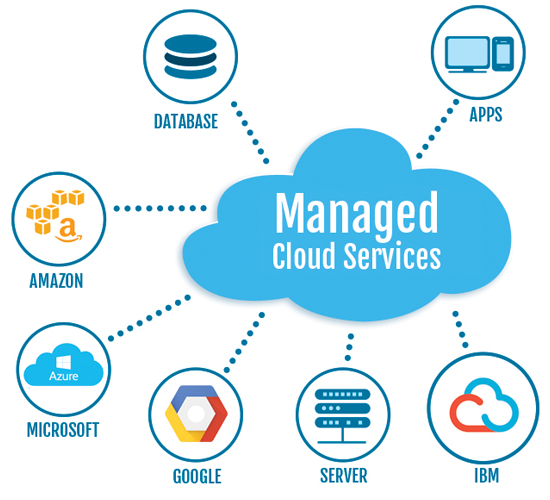Simplify Your Infrastructure With Cloud Provider
As companies browse the ever-evolving landscape of technology and data administration, the function of cloud solutions in simplifying infrastructure has actually come to be significantly famous. Just how can organizations efficiently navigate this change and really open the possibility of cloud services for streamlining their framework?
Advantages of Cloud Solutions
Cloud services offer a streamlined technique to managing IT facilities, giving organizations with adaptability, cost-efficiency, and scalability. One of the key advantages of cloud services is the scalability they provide.
Furthermore, cloud solutions eliminate the requirement for companies to spend in expensive equipment and software application. This cost-efficiency is a substantial advantage, specifically for little to medium-sized ventures seeking to lessen upfront costs. By making use of cloud services, companies can access high-grade IT sources without the significant price tag connected with standard facilities setups.
Moreover, cloud services give companies with the adaptability to access their data and applications from anywhere with a web link. This level of access improves cooperation amongst teams, makes it possible for remote work, and boosts total productivity. The flexibility supplied by cloud services empowers services to adjust quickly to changing market problems and consumer demands.
Expense Savings and Scalability
In enhancement to the functional benefits highlighted previously, the assimilation of cloud services into a company's infrastructure brings forth considerable expense financial savings and enhanced scalability. Cloud services offer a pay-as-you-go version, enabling businesses to scale sources up or down based upon existing requirements, therefore staying clear of the prices associated with preserving excess capability. This versatility enables business to adapt rapidly to changing demands without incurring unnecessary expenses.
Furthermore, cloud services get rid of the requirement for in advance financial investments in software and hardware, reducing capital investment. Operating costs are likewise lessened as business no longer need to handle and keep physical servers, resulting in lower power intake and IT staffing expenses. Furthermore, cloud services offer automatic updates and maintenance, making certain that the framework stays up-to-date and safe without requiring manual interventions.
Enhanced Protection Measures
Implementing rigorous safety measures is vital when integrating cloud services right into a company's framework to ensure and protect sensitive information compliance with industry guidelines. Cloud solution suppliers offer improved security functions such as information file encryption, firewall program protection, and multi-factor verification to alleviate cybersecurity threats. Encryption assists shield data both at remainder and en route, making sure that just licensed customers can access sensitive information. Firewall programs function as a barrier in between outside hazards and internal networks, tracking and regulating inbound and outward bound network website traffic. Multi-factor verification includes an extra layer of safety by calling for users to provide several types of confirmation prior to accessing the cloud solutions.
Moreover, routine safety and these details security audits and compliance evaluations assist determine susceptabilities and make sure adherence to market requirements. Companies can additionally gain from functions like automated safety updates and real-time hazard monitoring supplied by cloud provider. By prioritizing protection procedures and staying proactive in addressing possible threats, companies can with confidence take advantage of cloud services while protecting their beneficial information from unauthorized gain access to or violations.
Transitioning to Cloud Framework
To effectively incorporate cloud solutions into a firm's facilities, a structured technique that addresses the change in the direction of cloud-based solutions is crucial. Transitioning to shadow infrastructure involves careful planning and implementation to make sure a smooth migration procedure. The initial step is to examine the existing infrastructure and establish which systems and applications appropriate for migration to the cloud. This evaluation needs to think about aspects such as data sensitivity, conformity requirements, and performance requirements.
When the analysis is complete, a migration technique must be established. This method should outline the timeline, resources, and responsibilities for relocating each element to the cloud. It is necessary to communicate this plan clearly to all stakeholders to make certain placement and lessen interruptions during the change.
Throughout the migration process, monitoring and testing are vital to identify and address any issues quickly. Regular checkpoints ought to be developed to track progress and make required changes. Furthermore, training for employees on utilizing cloud services need to be supplied to guarantee an effective transition and make the most of the benefits of the brand-new infrastructure.
Best Practices for Cloud Fostering
Successful fostering of cloud services depends upon the strategic alignment of business objectives with technological abilities and organizational preparedness. To ensure a smooth transition to the cloud, organizations should start by carrying out a thorough assessment find out of their existing framework and determining which work are best fit for cloud movement. It is vital to involve key stakeholders from various divisions in the decision-making process to get buy-in and address any problems at an early stage.
An additional ideal practice for cloud fostering is to focus on safety and security and conformity. Organizations must meticulously evaluate the safety and security procedures offered by cloud service providers and guarantee that their information is shielded according to sector criteria and regulatory needs. Implementing durable information encryption, access controls, and routine safety audits can help reduce dangers connected with cloud try this site adoption.

Final Thought

As companies navigate the ever-evolving landscape of innovation and information administration, the duty of cloud services in streamlining infrastructure has actually come to be progressively prominent - Cloud Services. Just how can companies successfully browse this shift and absolutely open the potential of cloud services for streamlining their framework?
Cloud solutions provide a structured approach to handling IT framework, giving businesses with cost-efficiency, flexibility, and scalability. By using cloud solutions, businesses can access high-grade IT resources without the hefty cost tag linked with traditional infrastructure configurations.
To guarantee a smooth shift to the cloud, companies need to begin by performing a thorough analysis of their present framework and recognizing which work are best fit for cloud migration.